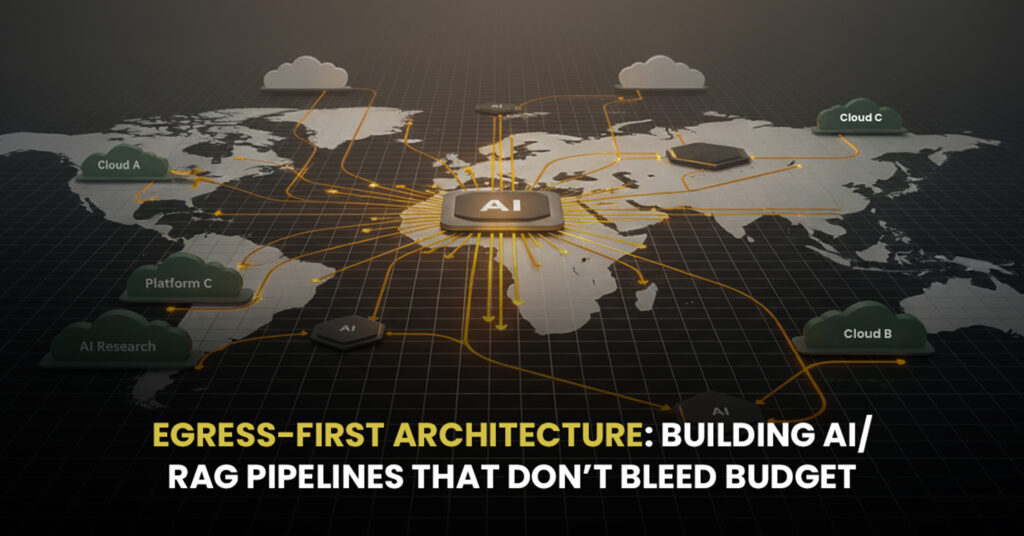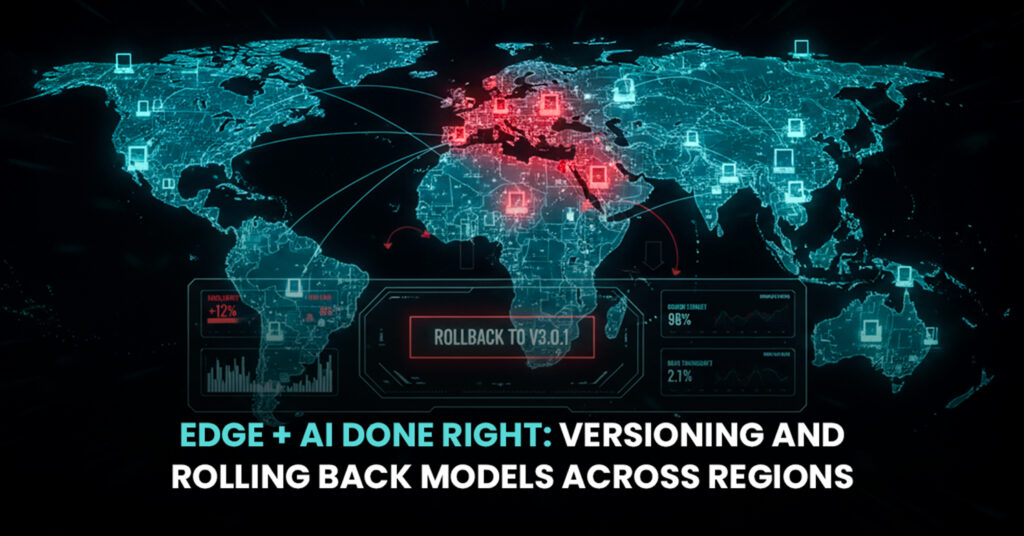In today’s hyper-connected world, businesses rely on cloud networks for everything from communication to data storage and processing. As digital transformation accelerates, cloud infrastructure must keep up with the increasing demand for faster, more reliable services. But with high traffic volumes, fluctuating demand, and growing user expectations, managing cloud networking has become a real challenge.
This is where Artificial Intelligence (AI) steps in, bringing a whole new level of intelligence and efficiency to cloud networking. AI isn’t just about automating tasks anymore; it’s actively improving how networks function in real-time. One of the most exciting applications? Predictive traffic management and latency elimination two critical areas that can completely transform the performance of cloud-based services.
Let’s explore how AI is revolutionizing cloud networking, making it faster, smarter, and more efficient.
Understanding Cloud Networking and the Latency Challenge
Before we dive into how AI is helping, let’s quickly define what cloud networking is. Simply put, cloud networking refers to the infrastructure that allows businesses to connect their devices, data, and applications over the cloud. It’s the backbone of everything from remote work to cloud-based apps and services.
However, as cloud networks become more complex and dynamic, latency the delay between sending and receiving data becomes a huge challenge. Low latency is crucial for services like real-time analytics, online gaming, video conferencing, and even virtual reality. Any delay can seriously impact the user experience and, for businesses, that could mean lost customers and revenue.
The problem? As networks expand and data flows increase, it’s harder to predict and manage these traffic spikes and latency issues manually.
How AI is Revolutionizing Cloud Networking
AI is the game changer here. With its ability to process massive amounts of data in real-time, AI makes it possible to predict, prevent, and address network issues before they even occur. Here’s how:
- Predictive Traffic Management: AI can analyze network traffic patterns and predict where congestion might occur. By using machine learning algorithms, the system can anticipate data flow changes and reroute traffic, ensuring that data packets take the fastest path possible.
- Autonomous Network Optimization: AI-powered systems can automatically adjust network settings to optimize performance, reducing the need for human intervention. These systems learn and adapt to network behaviors, allowing them to scale resources based on current demand without any downtime.
- Real-Time Monitoring and Management: AI constantly monitors network traffic, identifying performance issues or potential bottlenecks. As network demands shift, AI can quickly adapt by reallocating resources, ensuring optimal network performance at all times.
Predictive Traffic Management: The Brain Behind Intelligent Routing
Imagine if your cloud network could predict a traffic jam before it happened and adjust the routes accordingly. That’s essentially what predictive traffic management with AI does.
AI systems use historical data to build models that forecast traffic patterns and demand surges. For example, if your business has an e-commerce platform, AI can analyze peak shopping hours and ensure that your cloud resources are properly allocated in anticipation of higher traffic. If a sudden surge of users logs in during a flash sale, AI can predict this increase in real-time and adjust the network’s resources on the fly, preventing slowdowns and outages.
This predictive ability is a key advantage of AI in cloud networking. It helps ensure that your services remain reliable and fast, even when network conditions are unpredictable.
Latency Elimination: Achieving Real-Time Communication
Now, let’s talk about latency arguably the most annoying issue for anyone using cloud services. Whether it’s a laggy video call, slow cloud storage access, or delayed game actions, latency can ruin the experience. And when you’re dealing with cloud-based services that require split-second responses, like autonomous vehicles or financial transactions, latency simply can’t be tolerated.
AI can address this issue head-on. By continuously analyzing network traffic and rerouting data in real time, AI reduces latency by sending data through the quickest possible path. If there’s an issue along the usual route, the system can instantly find an alternative route that reduces delays. Additionally, AI can predict where latency is most likely to occur and preemptively adjust routes or resource allocation to minimize impact.
Case Study: Cloud gaming companies like NVIDIA and Google Stadia use AI to ensure smooth gameplay, even during high-traffic periods. By using AI to reduce latency and optimize traffic management, they’re able to offer uninterrupted, lag-free experiences for users.
AI-Powered Network Automation: The Future of Cloud Networking
One of the most significant advantages of integrating AI into cloud networking is automation. AI’s ability to learn and adapt continuously means that cloud networks can operate autonomously, making real-time adjustments without requiring human oversight.
This automation is critical in maintaining high performance across dynamic and ever-growing cloud environments. AI systems can manage network adjustments, handle traffic rerouting, and even scale up or down based on demand, all without manual intervention. Imagine a world where your cloud network self-adjusts, ensuring that your applications run smoothly regardless of how many users are connected.
This shift toward AI-powered automation is particularly important as businesses scale their operations globally. With the flexibility of AI, network capacity can easily adjust to accommodate growth without manual intervention, reducing human error and improving overall reliability.
Key Benefits of AI in Cloud Networking
- Improved User Experience: Fast, low-latency connections lead to smoother, more responsive applications. This enhances user satisfaction and boosts customer loyalty.
- Increased Efficiency: AI enables the optimal allocation of resources, reducing unnecessary overhead and ensuring network resources are used only when needed.
- Cost Savings: By predicting and preventing network issues before they arise, AI helps avoid the cost of downtime and excessive over-provisioning, allowing businesses to save money while maintaining high performance.
- Scalability: AI makes it easier to scale cloud infrastructure in response to real-time demand, ensuring that businesses can grow without worrying about performance bottlenecks.
- Enhanced Security: AI can also play a role in identifying potential security threats by detecting abnormal traffic patterns, helping prevent malicious attacks before they compromise the network.
Challenges and Considerations
While AI has immense potential to revolutionize cloud networking, there are some challenges businesses need to consider:
- Data Privacy and Security: As AI systems collect vast amounts of data to optimize network performance, ensuring that this data is secure and used responsibly is paramount.
- Integration with Existing Infrastructure: AI-driven solutions may require significant changes to existing network infrastructure, which could be time-consuming and costly to implement.
- Training and Adaptation: AI systems require careful training and fine-tuning to ensure they are predicting and reacting to network conditions accurately. It may take time for organizations to see the full benefits.
The Future of AI in Cloud Networking
The future of cloud networking is undoubtedly AI-driven. As machine learning algorithms improve and real-time data analysis becomes more sophisticated, we can expect AI to take on an even greater role in predictive traffic management and latency elimination. From 5G networks to edge computing, AI will continue to power faster, more efficient, and more reliable cloud services.
In the coming years, AI will enable the next generation of cloud infrastructure to be smarter, more autonomous, and capable of handling even the most complex networking demands.
Conclusion
AI is quickly becoming the backbone of modern cloud networking, providing predictive traffic management and latency elimination that transforms the way businesses manage their networks. By automating processes, improving user experience, and ensuring real-time data delivery, AI is making cloud services faster, more efficient, and more reliable.
As businesses continue to scale their cloud infrastructure, adopting AI-driven network management will be key to staying competitive and delivering top-tier performance to customers around the world. The future of cloud networking is AI-powered, and it’s time to get on board.



